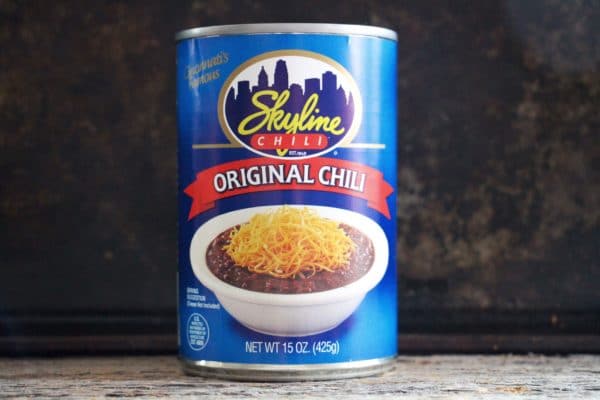As an aspiring manager or senior executive, your resume’s audience will be different from that of entry and junior-level employees. Other managers, directors, executive recruiters, VPs, Board Members, and everyone else in the C-suite will scrutinize your resume.
They’re all going to ask the same question:
“Can this person solve our problems?”
Yes, it’s the same thing people ask when hiring junior-level employees. But the stakes are higher.

In this tutorial, I’ll show you how to write a persuasive executive resume to match the expectations that comes with any senior-level job.
Main Differences Between a Junior and Executive-Level Resume
Let's first look at the difference between a regular resume and an executive resume:
1. Resume Content Differences
|
|
Junior Employee |
Managers and Executives |
|
Summary |
Lists accomplishments and skills related to your target job, including academic studies and internships. |
An executive summary shows your contribution to related jobs in a leadership capacity. Show them how you made an impact as a boss, not as a team member. |
|
Education |
Employees with a few years of experience still list their Alma mater, but not their GPA and coursework. This section also lists continuing education from their employers. |
Education is often listed at the bottom of an executive resume. While education is an important part of an executive’s career, the people reading their resume are more interested on how they learned on the job.
|
|
Work History |
A mixture of employment details from various positions and industries. |
Shows an abridged version of the applicant’s career. It highlights their progress from junior employee to management. For experienced managers and executives, it shows their achievements from one leadership role to another. |
2. Is It Written for a Specific Purpose?
You might get an interview with a generic resume for a lower-level position, but that strategy will never work for managers and executives.
Both managers and executives are hired for a specific reason, unlike regular positions where job ads are copied from the last hiring. Sometimes that reason is to turn a department around, enter a new market, create a new product, or build a winning team. If your resume doesn’t show the skills they’re looking for, don’t expect a call.
Customize your resume for each job application. If you have a contact, see if you can get an informational interview with a recruiter or anyone with information about the job vacancy.
3. How You Approach Your Personal Branding
Do you think you’re the only manager that can build a top-performing sales team? No.
Whatever your skill sets are, there are others that are even better than you.
That’s not meant to be demeaning—it’s only to show you the importance of setting yourself apart from others.
As a soon-to-be manager or executive, it’s time you establish a personal brand.
How Does a Personal Brand Look Like on a Resume?
Personal branding is such a buzzword nowadays that it’s hard to find actionable advice on the subject, especially on resumes.
Branding experts agree that your personal brand should be evident throughout your resume and other applicant marketing materials (e.g. cover letters, LinkedIn, and thank you notes).
A personal branding statement, sometimes called a leadership brand, is placed at the top of an executive resume, just below your name and contact details. It combines the main qualities that make you ideal for a position, and your personality as a leader.
5 Easy Steps to Write Your Personal Branding Statement
Kristen McAlister of Cerius Executives shared this step-by-step guide:
"1. Write everything you’ve accomplished in your career then find the underlying theme among these accomplishments.
2. Ask people you’ve worked with to describe the impact you made while working with them. What words do they use to describe you?
3. What are the types of work situations are projects you enjoy?
4. From the above three, what problems are you solving for a potential employer?
Example: Let’s say many of your accomplishments are related to training and motivating people. The people you work with all say you’re accessible and not afraid to try new teaching methods. You’re a risk-taker and forward-thinker.
Now ask yourself, if your current employer didn’t hire you, what problems would they have? For this example, the problems an accessible and forward-thinking manager can address are:
- Prevents the company’s training materials and teaching methods from getting outdated
- Helps new trainers improve their classroom management to ensure trainees or new employees listen to them
- Ensure the training of new employees translates to an ROI for the company
Here is the last, important step that Kristen McAlister recommends:
5. Write your personal branding statement in the form of a value proposition (I help [target audience] + [problem you solve]).
Tips for Writing a Personal Branding Statement
- Divide your accomplishments into different categories. Are they in training people, improving operations, developing new business, or is it in another business function?
- Look for the adjectives people use to describe you. Examples include: strategic thinker, resourceful, collaborative, and accessible.
Learn more about writing a great personal brand statement:
2 Examples of Top Personal Branding Statements (From Pro Executive Resume Writers)
1. From Jessica Hernandez of Great Resumes Fast:

2. From Michelle Riklan of Riklan Resources LLC:

4. Your Emphasis on Core Proficiency or Specialty
Your executive resume should have a consistent message about the skills you bring to the table. For instance, if you’re a regional manager with years of experience in trimming production costs, that should be evident in every section of your resume.
Here’s how:
- Write about your experience in optimizing production lines in your work history
- List leadership skills needed in optimizing manufacturing process, such as process re-engineering, improving supplier relationships, and workflow management.
- Include the savings in manpower and production costs achieved in your executive summary
CEOs and some high-level executives often have experience in more than one function, because they need to know how different parts of the company work together. Because of this, it’s advisable for them to have multiple executive resumes, each one tailored to the core proficiency required in their target job (e.g. sales and new market development, or human resources and change management).
Executive Resume Format: Chronological, Functional or Hybrid?
What's the best executive resume format you should use?
A chronological resume works best to show your career progression, but it has its limits. It makes the reader work twice as hard to understand your value because your achievements are buried in your career’s timeline.
A functional resume showcases your achievements and areas of expertise, but it hides the narrative of your achievements. So it doesn’t say if you managed to increase the product sales of the team you’re handling as a manager, and five years later leveled up to increase the sales performance of the State where you’re Regional Director.
A hybrid resume combines the two formats:
- Contact information
- Executive summary (a.k.a. key accomplishments)
- Achievements categorized into different skills or areas of expertise (skills)
- Employment history
- Education
All your qualifications are on the first half of the document, and the skills section doubles as an organized list of achievements. A hybrid resume format is often the best one to use for an executive resume.
Page Length and Use of Addenda
A resume’s space limitations restrict you from adding too much detail. That doesn’t mean those details can’t be included in your application.
For top performing managers and executives, their achievements can be submitted as a follow-up to their resume in the form of an addendum. You can either give it to the Hiring Manager during the initial interview, or send it via email when you follow-up on your application.
Executive and Manager Resume Addenda Examples
They often include include:
- Leadership initiatives: a list of projects or new policies you established
- Performance milestones: case studies of your notable accomplishments
- Publications: includes books and articles you authored
- Awards
Below is a screenshot of a technological addendum from Quintessential Careers:

Just remember, the addendum isn’t a place to list more
employers. Employment history should either be deleted if it’s not relevant to
the job, or condensed as in the example below.

How to Write an Executive Resume’s Most Critical Parts (With Examples)
1. Write Your Executive Summary
Start the executive summary with your personal branding or leadership statement. Then list three points that show you as an expert in solving the challenges your target employer is facing. You can also refer to the achievements you wrote in Step 1 of writing a personal branding statement.
For example, if you’re applying for a CMO role in a bank with aggressive expansion plans, you might want to position yourself as an expert in launching new products, entering new markets, and optimizing reach to different customer segments—individual customers, businesses, and investors.
2 Top Executive Summary Examples
1. From Wendi Weiner of Writing Guru:
"I have a natural zest for leading teams to achieve explosive sales for clinical diagnostic laboratory testing services. The will to succeed is truly the most powerful tool in your personal kit."
- Market Growth Champion: Intuitive business acumen in achieving $20M new market share growth.
- Transformational Business Leader: Forward-thinking business ideals to drastically reduce contract costs by 45% and rally client retention by 92%
- Fearless Game-Changer: Entrepreneurial spirit in growing team from ground-up with startling sales wins and profits in less than 18 months."
2. From Jessica of Great Resumes Fast:

2. Areas of Expertise (Skills Section)
Organize your skills based on the management function required for the job, and then list it all under the executive summary.

How to Handle Non-Leadership Skills
“If you have other technical skills required for the job, but aren’t necessary for management, list them in a standalone section (“Technical Skills”) after your employment history,” suggests Joanne Munekawa of Employment Boost.
Your talent in team management is important, but this alone isn’t sufficient to get you hired. List other managerial and executive-level skills in your arsenal.
Skill Examples for Executives
- Capital structure analysis
- Change management
- Creating and launching new initiatives
- Integrated Engagement Planning
- Mergers and Acquisitions (M&A)
- New business development
- Policy development
- Profit and Loss (P&L) improvement
- Strategic planning
Skill Examples for Managers
- Delegation
- Employee development
- Project management
- Coaching employees
- Training new-hires
For combination resume formats, this includes a categorized list of achievements. To add context, the company where those accomplishments occurred are also listed.
Example of Areas of Expertise (Skills Section) in a Combination Resume Format

Learn more about listing skills on your resume in this helpful Envato Tuts+ tutorial:
3. Executive Work History
Combination Format Employment History
List the companies you’ve worked with and the corresponding employment dates, followed by a brief description of the company (A) and the scope of your work (B). Don’t forget to include:
- Job-specific keywords
- Your impact as a leader for the organization (business metrics)
- How your work affects other employees (soft skills as a leader)
After all, managers and executives aren’t merely top-performers. They’re also accountable for their subordinates’ performance.

Most of your accomplishments would’ve already been listed at the top half of your resume, in the areas of expertise section.
In some resumes, the scope of work isn’t even listed. Here’s an example of a combination work history for a General Counsel position:

Chronological Format
Employment History
In executive resumes that use a chronological format, the
work history section also includes a company description (A) and job
description (B). This differentiates you from other managers and executives
with the same title but a different job scope.
Accomplishments not included in the executive summary will be listed below each employment entry, sometimes emphasized as “key achievements.”

4. Concise Education Section
The applicant’s Alma mater is still listed, but not their graduation date. In some cases only their master’s degree or doctorate is listed. Executive resumes also include continuing education and license information.
Do’s and Don’ts of Writing Executive Resumes
1. Do Add Company and Job Information
Executive Recruiters I talked to for this article agree that adding information about the company and your role helps them gauge if you’d be suited for a role. Helpful details include:
- Company size
- Number of employers
- Revenue information
- Public or private
- Industry information: products or services sold and target clientele
2. Do Use Action Words
Stay away from boring action words that don’t adequately describe your efforts at work. I wrote extensively about this here:
Do Use the CAR Framework for Your Notable Contributions
Follow either the “Challenge - Actions - Results” or its variation “Results - Action - Challenge" format to come up with concise but effective accomplishment statements. Here are examples of each:
1. “Challenge - Actions - Results”
Re-purposed an over-budgeted and rarely used CRM system for an inbound marketing campaign to recover 40% of invested money in the form of new leads and deals
2. "Results - Action - Challenge"
Generated $2M in sales after implementing a regional sales and customer service refresher training for all under-performing employees
It’s Only Difficult at First
Is all of this overwhelming for you? That’s normal because you’re taking a huge leap in your career. You may not enjoy the writing process, but avoiding it will cheat you out of wonderful career opportunities.
Write your executive resume one section at a time if you have to. Just follow the steps in this tutorial and don’t be afraid to ask for feedback.
Find professional resume templates on GraphicRiver or browse through our curated selection of the best Microsoft word resume templates.



















